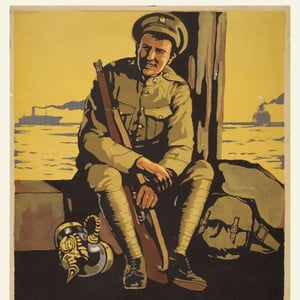 As part of World War I & The Copper Country, a full-scale reconstruction of a section of WWI firing trench on the front line can be viewed through our webcam! This webcam will be available until November 11.
As part of World War I & The Copper Country, a full-scale reconstruction of a section of WWI firing trench on the front line can be viewed through our webcam! This webcam will be available until November 11.
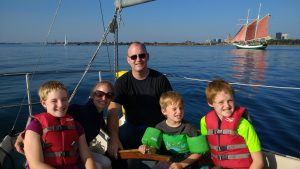
This will be my inaugural communication as the new Dean of the College of Sciences and Arts. I join Michigan Technological University after eleven years in the mathematics department at the University at Buffalo, SUNY; the last six as department chair. I am joined by my wife of 18 years, Ginny, and our children Meghan (13), Benjamin (9), and Adam (7).
I marveled from afar in June at the resiliency of the Copper Country residents pulling together to recover from the disastrous Father’s Day flood. We were fortunate that our new house, high up on Agate Hill, escaped unscathed. Our new friends and neighbors have been so very welcoming to our family.
This is an exhilarating time to arrive at Michigan Tech. We have a new president and four of the five colleges/schools have new deans. Everyone is full of ideas on how to maintain and build on the great momentum the departing leaders built. Four of our 10 departments will be searching for new chairs this year.
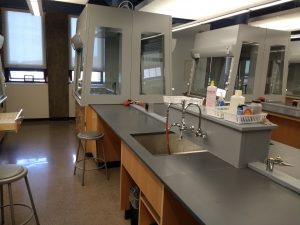 I have been touring the CSA departments and am so impressed by the commitment of our faculty to excellence in both teaching and scholarship. I visited our beautifully renovated chemistry teaching labs. I hope we will secure the funds to renovate the remaining labs. I toured the sleep center where Professor Jason Carter of our Kinesiology and Integrative Physiology department is supported by Michigan Tech’s only NIH R01 grant, studying “Alcohol and Neurovascular Control in Humans”.
I have been touring the CSA departments and am so impressed by the commitment of our faculty to excellence in both teaching and scholarship. I visited our beautifully renovated chemistry teaching labs. I hope we will secure the funds to renovate the remaining labs. I toured the sleep center where Professor Jason Carter of our Kinesiology and Integrative Physiology department is supported by Michigan Tech’s only NIH R01 grant, studying “Alcohol and Neurovascular Control in Humans”.
I attended a beautiful performance of the opera “Carmen” in front of a packed house at the Rosza center. Visual and Performing Arts Chair Jared Anderson directed the chorus and his colleague Joel Neves conducted the orchestra.
I want to thank outgoing Dean Bruce Seely for his dedicated 10 years of service and to wish him all the best in retirement. Bruce has been extremely generous sharing with me his time and wisdom, both before I arrived and since I started.
Summer is still trying to reach the UP — we’ve experienced too many days in the 60s with gray skies and rain. But the weather has not affected the recognition being earned by the faculty here in the college.
Associate Professor L. Syd Johnson (Humanities) works on bioethics and has explored such issues as head trauma and concussions in sports. She was recently appointed to an advisory group at the National Institutes of Health Neuroethics Division, the BRAIN Initiative (Brain Research through Advancing Innovative Neurotechnologies). She joins the initiative’s Multi-Council Working Group. This is a very nice recognition of the respect of Syd’s colleagues.
Professor of Physics John Jaszczak was part of an international team that identified and unraveled the composition and make-up of a new mineral over the past two years — Merelaniite. Named for the mining town in Tanzania where the mineral was located, Merelaniite was just named the Mineral of the Year for 2016. The account of this effort offers an inside look at the process of describing and naming a new mineral.
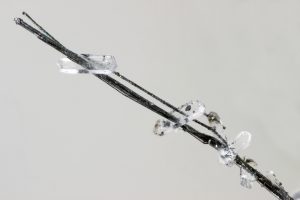
The summer routine has settled in here – marked – finally! – by a few days of very nice weather. Although the black flies are also swarming, the sunshine beats the dreary drizzle! But the summer pace also will let me catch upon recognizing a few of the wonderful accomplishments of faculty from the college’s departments. And I could go on – but I think this list offers a taste of the variety of high quality work underway here. Great work by great people!
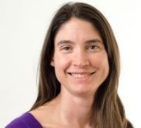 Richelle Winkler (Social Sciences) was recently honored with the University’s Distinguished Service Award, in recognition of her numerous outreach activities — most notably by assisting the Main Street Calumet group understand community development. She also was involved in developing Houghton County’s entry to the Georgetown University Energy Prize. Congratulations!
Richelle Winkler (Social Sciences) was recently honored with the University’s Distinguished Service Award, in recognition of her numerous outreach activities — most notably by assisting the Main Street Calumet group understand community development. She also was involved in developing Houghton County’s entry to the Georgetown University Energy Prize. Congratulations!
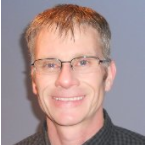 Gord Paterson (Biological Sciences) joined the department in January and was recently awarded funding from the Michigan Department of Natural Resources for a project aimed at helping restore Arctic grayling to the state’s waters.
Gord Paterson (Biological Sciences) joined the department in January and was recently awarded funding from the Michigan Department of Natural Resources for a project aimed at helping restore Arctic grayling to the state’s waters.
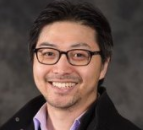 Philart Jeon (Cognitive & Learning Sciences) continues to support an expanding research program related to sound and human interactions with machines and devices. His most recent award is for a 4-year study of assess techniques for take-over of control in autonomous vehicles from the Korean Automotive Testing and Research Institute. He also published a handbook, Emotions and Affect in Human Factors and Human -Computer Interaction (Elsevier) in April.
Philart Jeon (Cognitive & Learning Sciences) continues to support an expanding research program related to sound and human interactions with machines and devices. His most recent award is for a 4-year study of assess techniques for take-over of control in autonomous vehicles from the Korean Automotive Testing and Research Institute. He also published a handbook, Emotions and Affect in Human Factors and Human -Computer Interaction (Elsevier) in April.
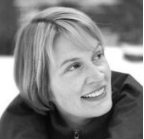 Stephanie Carpenter (Humanities) recently received the 2017 Press 53 Award for Short Fiction for her short story collection Missing Persons. The editor-in-chief of the press selected her from 230 nominees, and concluded that he was “looking forward to sharing this collection of stories with readers everywhere.”
Stephanie Carpenter (Humanities) recently received the 2017 Press 53 Award for Short Fiction for her short story collection Missing Persons. The editor-in-chief of the press selected her from 230 nominees, and concluded that he was “looking forward to sharing this collection of stories with readers everywhere.”
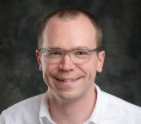
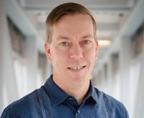 Scott Kuhl, Keith Vertanen and James Walker (Computer Science) recently presented their research on typing in virtual reality at the ACM conference on Human Factors in Computer Systems, a major conference. Walker lead the project as part of his dissertation project and noted that there have been few studies of this effort in virtual reality.
Scott Kuhl, Keith Vertanen and James Walker (Computer Science) recently presented their research on typing in virtual reality at the ACM conference on Human Factors in Computer Systems, a major conference. Walker lead the project as part of his dissertation project and noted that there have been few studies of this effort in virtual reality.
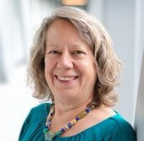 Linda Ott (College of Sciences and Arts) has again received support from the Google Foundation in support of the Tech summer program to support secondary school educators in the area of computer science. While many observers are pressing for more students to gain the opportunity to code while in high school, not all teachers in this area are formally prepared, and others need to stay up to date in this rapidly changing area. Ott is working to remedy these issues. Teachers can still apply for the CS 4 All program which will be ion campus from August 14-16.
Linda Ott (College of Sciences and Arts) has again received support from the Google Foundation in support of the Tech summer program to support secondary school educators in the area of computer science. While many observers are pressing for more students to gain the opportunity to code while in high school, not all teachers in this area are formally prepared, and others need to stay up to date in this rapidly changing area. Ott is working to remedy these issues. Teachers can still apply for the CS 4 All program which will be ion campus from August 14-16.
In recent years, a distinguishing feature of academic research has been its deep interdisciplinarity. This pattern has been growing since World War II, an event that spawned scholarly attention to developments in materials, nuclear power, rockets, jet aviation, computers and the medical field, among others. A good signal of the trend was the emergence of hybrid fields of specialization whose very titles signaled the difference, such as biochemistry, biophysics, geophysics, biostatistics and later biogeochemistry and biogeophysics. Importantly, much of the research in ALL fields was taking place at the boundaries between fields rather than at the core.
 One of the more important arenas for the growth of this approach to science and research at Michigan Tech has been in the domain of Atmospheric Sciences. Faculty involved in this research hail from physics, chemistry, environmental engineering, and geological sciences. And the program has just marked its 10th year, during which time the group has become visible and respected among their peers. A key step came in 2010, when the National Science Foundation provided funds to construct the apparatus that allows investigators to create the conditions for atmospheric clouds in the laboratory – a cloud chamber.
One of the more important arenas for the growth of this approach to science and research at Michigan Tech has been in the domain of Atmospheric Sciences. Faculty involved in this research hail from physics, chemistry, environmental engineering, and geological sciences. And the program has just marked its 10th year, during which time the group has become visible and respected among their peers. A key step came in 2010, when the National Science Foundation provided funds to construct the apparatus that allows investigators to create the conditions for atmospheric clouds in the laboratory – a cloud chamber.
This grant of more than $1 million proved pivotal in advancing the research program and reputation of Michigan Tech’s atmospheric scientists. Studies conducted with the unique equipment have since illuminated the nature of rain droplets, the formation of snow particles and crystals, and the the behavior of aerosols in the turbulent upper atmosphere, among other subjects. In short, this is a very successful research group!
That success is affirmed by a recent note that the group’s current director, Raymond Shaw, shared with his colleagues to remind them of this anniversary. He chose to reflect a bit on the origin of the effort.
“When Richard Honrath and I submitted the Atmospheric Sciences program proposal, 7 names were listed as participating faculty, and that has now grown to 12. The program started with two students. We now have 8 alumni at various universities and labs around the US, 8 current students, and 2 or 3 more students starting in the fall.
Many excellent research papers have been written over that time and a sustained level of external funding for atmospheric research is firmly in place (as recognized, for example, by the recent NSF ranking of federal funds by discipline). Michigan Tech is now widely known and respected in the atmospheric sciences community.
We can be happy about what we’ve accomplished, and I’d like to thank administrators and department chairs who allowed a small group of faculty spread across campus start an interdepartmental program – a relatively novel idea at that time – and fostered it over the years with a graduate research assistant line from the grad school, availability of faculty time for teaching courses, hiring efforts, etc.
Thanks to all of you for the way you have contributed to the program over the years.”
 Richard Honrath was very much the founding spirit as the initial director of the atmospheric sciences program.
Richard Honrath was very much the founding spirit as the initial director of the atmospheric sciences program.
Tragically, he passed away in 2009 in a kayaking accident. But the current cloud chamber lab and the team of atmospheric researchers keep his spirit very much alive.
So happy birthday, cloud chamber! Keep up the good work!
Most academics expect to move and change universities on occasion, as part of the normal pattern of life. But some of us – including yours truly – find a place we want to be and stay awhile. On May 9, Michigan Tech recognized those staff and faculty who had 25, 30, 35, and 40 years of service. Several people from the college were on that list, and I want to recognize them reaching these important milestones. A university pays attention to teaching and learning and to research — two labor-intensive activities. In other words, we cannot be successful without the dedicated efforts of the people who lead those efforts in education and knowledge generation. Each of the people on this list make a difference in all they do, and we are most thankful for it. Even more importantly, the students depend up on them. To be excellent for a long time is a difficult thing to do, but this group has done exactly that.
25 years: Michael Irish (VPA), John Jaszczak (PHY), Donald Kreher (MA), Sylvia Matthews (CSA), Ravindra Pandey (PHY), Lorri Reilly (CH), Kelley Smith (CH), Allan Struthers (MA), Vladimir Tonchev (MA)
35 years: Andrea Lappi (PHY) Karen Salo (CSA)
Both of the 35-year recipients are pivotal staff for CSA. Andy manages the day-to-day tasks as department coordinator in Physics, while Karen is the heart and sole of administration in the college. But everyone here contributes to making the college work. I want to congratulate everyone for their contributions and for their efforts – and for making it to 25 or 35 years! Thanks to each and every person!
FYI – for truth in advertising purposes, that’s me in the picture with Karen Salo – as I now have 30 years of service to Michigan Tech. The other picture shows Ravi Pandey and Andy Lappi from Physics.
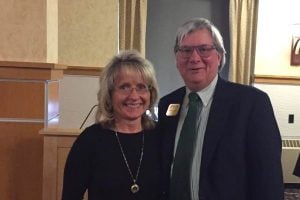
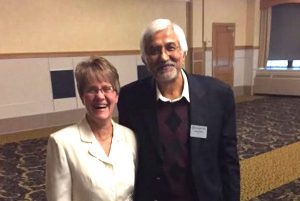
Universities have occasionally struggled in recent decades to achieve an appropriate balance between our two core responsibilities: teaching and research. Not surprisingly, this challenge has surfaced at Michigan Tech as we have worked to balance Tech’s traditional strength as an undergraduate teaching institution with the more recent strategic emphasis upon graduate education and research supported by external funding. But in the College of Sciences and Arts, our commitment to teaching and learning has never weakened and remains a crucial yardstick for measuring how well the college meets its mission.
Indeed the college and its faculty take pride in excellence in the classroom. A significant part of CSA’s mission is delivering core foundational courses in calculus and statistics, physics, chemistry, composition and communication, global issues and other courses in the general education program to EVERY student in every major. For example, the Department of Mathematical Sciences instructs more than 7,000 students in its courses each year, at a time when the university enrollment is just over 7,000. Yet the math faculty also maintain a high level of scholarship and each authors an average of 2 research articles per year. That type of balance is found in every department, for the college’s faculty must be good teachers as well as good scholars. And many are excellent!
I consistently take pride in the efforts of our best teachers, and this is the time of year when those individuals are recognized. This spring, I highlighted the efforts of five college faculty for their exemplary teaching approaches and goals in the Dean’s Teaching Showcase. The showcase is a weekly event inaugurated by the Director of the Jackson Center for Teaching and Learning, with each dean selecting exemplary faculty whose instructional efforts are less likely, because of the topic or the course, to achieve recognition through the regular teaching awards.
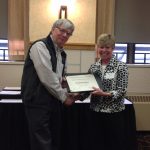
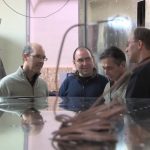

The showcase continues the rich and valuable dialogue that has taken place among the faculty over the past 15 years or more about teaching and student learning. You can read more about the showcase nominees from CSA in Tech Today: Elizabeth Reed (MA); Raymond Shaw (PHY); Loredana Valenzano (CH); Donald LeFreniere (SS); and Steven Elmer (KIP); each brings something special to our students and is well deserving of this recognition.
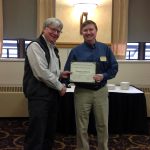
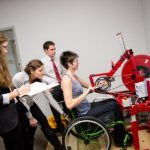
As the Showcase unfolded this spring, the process of nominating the faculty to be inducted into Tech’s Academy for Teaching Excellence proceeded on its own pathway, culminating in a dinner on April 4 to honor the new inductees into the Academy as well as others nominated for a teaching award more than once. This year the college was again well represented: 2 individuals were nominated in the Lecturer/Assistant Professor Category, and another faculty member in the associate and professor category. The first nominee was Senior Lecturer Beth Reed from Math, who was inducted into the Academy in 2012 and has since been nominated several times for the outstanding teacher award. Beth’s repeated nominations reflect her intense dedication to help students succeed in her statistics classes.
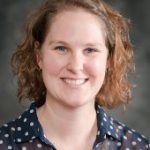

A first-time nominee to the Academy is Brigitte Morin from Biological Sciences, who is an integral part of the Medical Laboratory Sciences (MLS) program. Her nomination highlighted the amazing enthusiasm she brings to teaching and learning. A graduate of our MLS program, she returned to Tech several years ago and has made an an exceptional contribution from day one. She mentioned herself how thrilled she was to be back here with the people whose teaching had made such a difference to her. Now she is doing the same for another generation of Tech students! But the highlight of the evening may have been the comments from MC Friedrich in Visual and Performing Arts, nominated (again!) in the professor category. MC chose to read a few comments from students she found posted on RatemyProfessor.com. They seemed to have a different idea about excellent teaching.
“The class was a little too slow for me but others needed the time.”
“Stop expecting us to remember and do what we learned earlier in the class.”
“In the future add in some more evil twists to the projects so we can brag to the following classes that we did not have to do that.”
“The projects are hard. Make them simpler.”
“And I wish you wouldn’t give us a chance to fix mistakes for points. That’s too much pressure.”
Behind the humor, however, we can see the commitment to preparing students for their future careers that is the mark of every good teacher. It’s a hallmark of our faculty, and yet another reason for pride in what is happening here at the college!
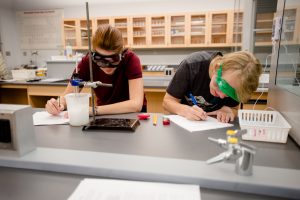 The pace of the academic semester picks up in mid April, with students and faculty alike realizing that the end of the semester is looming. Students hustle to complete projects and papers, but I am especially impressed by the number of research activities in which CSA undergraduates are involved.
The pace of the academic semester picks up in mid April, with students and faculty alike realizing that the end of the semester is looming. Students hustle to complete projects and papers, but I am especially impressed by the number of research activities in which CSA undergraduates are involved.
Michigan Tech has sought to connect students to research as early as possible in their time here, believing that research, like other experiential activities, can transform their education. The following list of their work is, I believe, impressive.
In Biological Sciences, fourth-year Biological Sciences student Rebecca Hobmeier recently presented a department seminar on “Drosophila Gene Regulation in the Formation of Complex Color Patterns in Yellow Evolution of Guttifera.” Thomas Werner was her adviser.
In the Physics Department, a number of seniors presented summaries of their projects at a department colloquium. These included:
- Floyd Johnson — “Free-standing and Substrate-Supported Cytosine Molecules: Molecular Dynamics Study, advised by department chair Ravi Pandey
- Austin Hermann — “Quantum Confinement Effect in Silicon,” advised by Ranjit Pati
- Colin Sheidler —”Unidirectional Emission from Microring Lasers,” advised by Ramy El-Ganainy
- David Russell — “A Search for Exotic Particles Using AUGER Data”, advised by Brian Fick
- Michael Foetisch — “Iron Electrowinning: Proof of Concept and Optimization,” advised by Timothy Eisele
- Nick Videtich — “Pico-second Pulsed Laser System Using Neodymium-doped Yttrium Vanadate Crystal,” advised by Jae Yong Suh
- Kelci Mohrman — “Searching for Emission from the Geminga Pulsar Wind Nebula in GeV Engines,” advised by Petra Huentemeyer.
And in Social Sciences, three students presented their undergraduate theses in anthropology to the department.
- James Wezensky — Stamp Mill Technologies: The Industrial Past of Isle Royale National Park, advised by Pat Martin
- Jakob Williams — The Party of Trump: Understanding the Rise of the Billionaire Populist, advised by Melissa Baird
This list could be multiplied many times, as faculty in the life sciences (especially Biological Sciences, Chemistry and Kinesiology) eagerly recruit undergraduates to work in their labs, so that some of them leave Michigan Tech as co-authors or contributors to a publication in an academic journal. These outcomes explain why many of us talk about the unity of teaching and research and see them as deeply complementary activities. These student projects offer only the most recent example of effort to integrate these core responsibilities.
Perhaps it is because I share a building with the Department of Visual and Performing Arts (VPA), but it is interesting that VPA activities have figured several times in my blog comments this spring. Whatever the reason, I am impressed by the diversity and scope of their recent and upcoming activities. Those events show the full artistic talents of our faculty and students, and enrich us all.
A couple of weeks ago, we celebrated 50 years of jazz on campus. Don Keranan was the legendary faculty member who launched that effort, which Mike Irish has now guided for a long time! A good group of alumni journeyed back to campus to mark this grand occasion, and joined the current students players. Quite the event, as the image of the alumni jazz players shows!!


Photo by Hannah Kowalewski
Last week two other notable events occurred. The first was the VPA faculty and staff art exhibition, which opened with a reception on Friday afternoon. Labeled Amusement Park Avenue, just about every person in the department contributed to the show. These ranged from M.C. Friedrich’s historically accurate doll costumes to images and sound resulting from the Listening to the Parks soundscape project that showcases the Lake Superior National Parks (Kent Cyr, Christopher Plummer and Libby Meyer). Anne Beffel’s Every Color of Eyes project (mentioned in my previous blog) also was displayed along with 13 other faculty and staff works, several in mixed media. The exhibit can be seen in the Rozsa Gallery until April 28, and for the last few days, student art produced this year will be displayed in an adjoining section of the gallery.
The second activity on Saturday April 1, was a very different kind of presentation. Musical performers from Vancouver, the Orchid Ensemble, offered their unique fusion/world music selections using traditional Chinese and other instruments. They were joined for the second half of their program by conScience, the Michigan Tech Chamber Singers. The results proofed very interesting for most of us. For example, in the second combined number, Orchid Ensemble accompanied the Chamber Singers, while in the final number the singers served as vocal instruments accompanying the Ensemble. As always, considering there are no art or music majors on campus, both events were superb. And a significant part of the success of the gallery exhibit and the musical performance goes back to the students responsible for the technical presentation, lighting, and sound. These students had an special learning experience with Orchid Ensemble

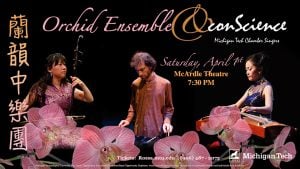
And there is still more to look forward to, as the department is presenting its version of West Side Story, famous for Leonard Bernstein’s music and Stephen Sondheim’s lyrics. There will be three presentations from April 13 to 15. And that will not exhaust the end of the semester schedule, so check out the VPA calendar of events. We are lucky to have such great opportunities to experience the arts in all of their forms.
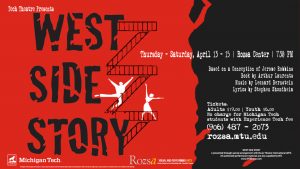
One of the best things about being dean is to watch faculty and students build the successes that help their careers and the reputation of Michigan Tech. Three items passed across my desk this week that show the range of areas where the people in this college are doing really good things.
 Kathy Halvorsen, professor of natural resources policy in Social Sciences, with a joint appointment in the School of Forest Resources and Environmental Sciences, was just elected Executive Director of the International Association for Society and Natural Resources (IASNR). Her term will begin in January 2018. Kathy has been deeply involved in a major project on Sustainability, Ecosystem Services, and Bioenergy Development across the Americas, sponsored by the National Science Foundation’s Partnerships for International Research and Education program to the tune of $4.8 million over the period 2012-17. Through such international efforts, Kathy has been involved in IASNR, culminating in this newest leadership position within the organization.
Kathy Halvorsen, professor of natural resources policy in Social Sciences, with a joint appointment in the School of Forest Resources and Environmental Sciences, was just elected Executive Director of the International Association for Society and Natural Resources (IASNR). Her term will begin in January 2018. Kathy has been deeply involved in a major project on Sustainability, Ecosystem Services, and Bioenergy Development across the Americas, sponsored by the National Science Foundation’s Partnerships for International Research and Education program to the tune of $4.8 million over the period 2012-17. Through such international efforts, Kathy has been involved in IASNR, culminating in this newest leadership position within the organization.
 Anne Beffel, professor in Visual and Performing Arts, has been deeply in performance art over her entire career. She has labeled her most recent effort “Every Color of Eyes.” The effort is related at least in part to the visit to campus this week of Jane Elliot, recipient of the National Mental Health Association Award for Excellence in Education. Elliot conducted the now famous “Brown Eyes/Blue Eyes Experiment” in which she treated blue-eyed students better than brown-eyed students, and student performance quickly came to match those expectations. Beffel, with the help of several students, intends to show our differences as well as our common humanity through the metaphor of eye color. She is asking for people to email her pictures of their eyes for an exhibit opening March 31 in the Rozsa Gallery. Please consider volunteering!
Anne Beffel, professor in Visual and Performing Arts, has been deeply in performance art over her entire career. She has labeled her most recent effort “Every Color of Eyes.” The effort is related at least in part to the visit to campus this week of Jane Elliot, recipient of the National Mental Health Association Award for Excellence in Education. Elliot conducted the now famous “Brown Eyes/Blue Eyes Experiment” in which she treated blue-eyed students better than brown-eyed students, and student performance quickly came to match those expectations. Beffel, with the help of several students, intends to show our differences as well as our common humanity through the metaphor of eye color. She is asking for people to email her pictures of their eyes for an exhibit opening March 31 in the Rozsa Gallery. Please consider volunteering!
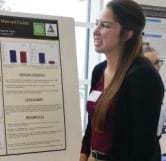 Stephanie Dietrich, received first place presentation in the Fifth Annual Undergraduate Research Symposium.
Stephanie Dietrich, received first place presentation in the Fifth Annual Undergraduate Research Symposium.
Her research was “Subjective and Objective Assessments of Sleep Differ in Male and Female Collegiate Athletes,” in Kinesiology and Integrative Physiology.
This is the second year in a row that KIP students have been at the top of the list in this event! And that does not exhaust the list of accomplishment from that department.

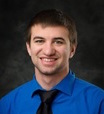 Two KIP students- Matt Kilgas and Thomas Bye — and faculty advisor Steve Elmer received Michigan Space Grant Consortium awards in the most recent competition. But this year Tom Bye was the first undergraduate in the department to secure this type of support.
Two KIP students- Matt Kilgas and Thomas Bye — and faculty advisor Steve Elmer received Michigan Space Grant Consortium awards in the most recent competition. But this year Tom Bye was the first undergraduate in the department to secure this type of support.
Congrats to Stephanie, Matt, Tom. Clearly, the faculty and students in the college are doing quite well – and I extend my congratulations to all of them!